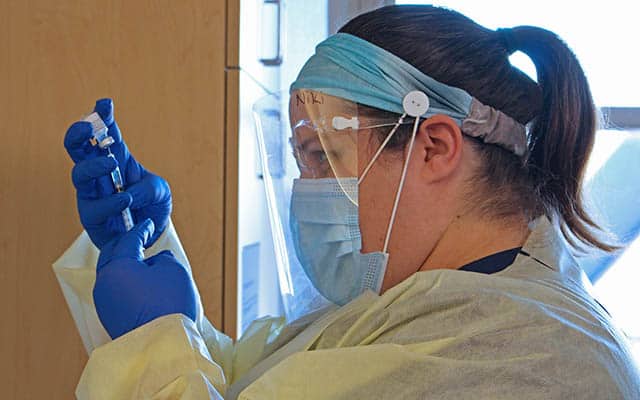New research from the Mass General Brigham hospital system shows that discontinuing universal masking and testing for respiratory viruses correlates with increased hospital-onset infections. Reintroducing masking for healthcare workers during a viral surge reduced these infections, highlighting the complex interplay between prevention policies and patient outcomes.
Published in JAMA Network Open | Estimated reading time: 5 minutes
Study Overview
The study analyzed data from over 641,000 hospital admissions across 10 hospitals between November 2020 and March 2024. Researchers examined the effects of masking and testing protocols on hospital-onset infections, focusing on SARS-CoV-2, influenza, and RSV. Policies transitioned through four phases: universal masking and testing, masking-only policies, and periods without these interventions.
During universal masking and testing, the rate of hospital-onset infections was 2.9% relative to community-onset cases. After these measures were discontinued, this figure rose sharply to 15.5%, before dropping to 8.0% when masking for healthcare workers was reinstated during a winter respiratory virus surge.
Key Findings
The study revealed that ceasing both masking and testing increased hospital-onset viral infections by 25% (rate ratio [RR], 1.25; 95% CI, 1.02-1.53). Conversely, reinstating masking for healthcare workers reduced these infections by 33% (RR, 0.67; 95% CI, 0.52-0.85). The findings suggest a measurable impact of these protocols, particularly during periods of high community virus transmission.
Among hospital-onset SARS-CoV-2 cases following the end of universal testing, nearly 90% showed new symptoms, and 27% had known exposure to the virus, confirming their classification as true hospital-onset cases. This underscores the role of testing in accurately identifying infection origins.
Implications
Masking and testing policies remain critical tools for mitigating hospital-onset infections, which are associated with increased patient mortality and extended hospital stays. These findings support a tailored approach to prevention policies, balancing public health benefits with resource limitations.
Glossary
- Hospital-Onset Infection: An infection diagnosed more than four days after hospital admission, often linked to in-hospital transmission.
- Community-Onset Infection: An infection diagnosed within four days of admission, typically acquired outside the hospital.
- Rate Ratio (RR): A statistical measure comparing the occurrence of an event in different conditions or time periods.
Test Your Knowledge
What percentage of patients were tested for COVID-19 during the universal testing period?
92.9% (or 386,257 of 415,541 admissions) were tested during the universal testing period.
How much did hospital-acquired infections decrease when staff masking was reinstated?
Hospital-acquired infections decreased by 33% after healthcare worker masking requirements were reinstated.
What were the three key indicators used to validate hospital-onset COVID-19 cases in the study?
The study looked for new symptoms of respiratory infection, known exposure to SARS-CoV-2, and PCR cycle threshold of less than 30.
How did the median interval between tests change after universal testing ended, and what might this suggest about infection detection capabilities?
The median interval increased from 4.4 days to 11.1 days, suggesting potential delays in detecting new infections and reduced surveillance capacity.
Enjoy this story? Subscribe to our newsletter at scienceblog.substack.com.


